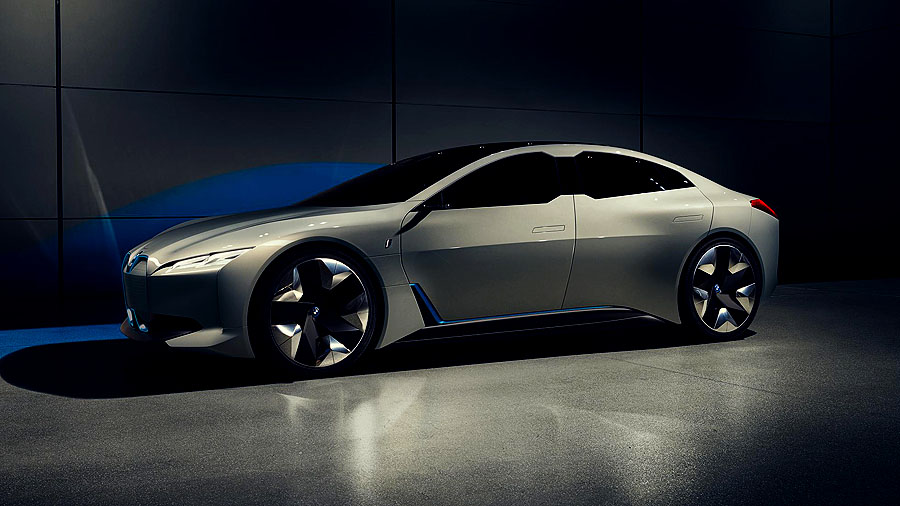
BMW has never made any secret that it wants to be a trailblazer and a leader when it comes to electric cars. In 2013, when other manufacturers were agonising over whether to introduce a hybrid or two, it launched the all-singing, all-dancing, carbon-fibre-slathered ‘i’ sub-brand. It was a hefty gamble, and while sales have been modest, the learning curve has been steep.
Four years on and with the electric revolution gathering pace, BMW has gathered its experience and put together a shiny new e-mobility plan. The principle is simple: to make any real money, you need to cut costs, and for EVs that means avoiding bespoke platforms and bespoke production lines.
So, starting in 2021 with the production version of the Vision Dynamics concept (pictured above, and in the gallery just below - nicknamed i5, designed for speed but with a 600-700km range) and the iNext (a separate pure-electric ‘i’ car, bodyshape unknown, the focus more on autonomy) almost all BMWs, whether SUVs or saloons, whether sporting a combustion engine, a plug-in hybrid, or fully electric, will be built on the same scalable, modular architecture. Still with me? Good.
The ‘i’ family will continue to offer BMW’s most radical design, bodyshapes and thinking, but unlike the bespoke i3 and i8, the platform and drivetrain underneath will be identical to all future electrified versions of the ‘standard’ range. The fact is that BMW has no idea how the mix of combustion engines, plug-in hybrids and full electric cars is going to fluctuate in coming years, but this way it doesn’t matter. If the demand for one type suddenly rockets - due to new legislation for example - then they simply crank out more of those. Using this principle BMW says it’ll have 25 electrified cars (plug-in hybrid or full EV) in the range by 2025. Currently it has seven.
Let’s focus on full EVs for a moment. From 2021 onwards the motor, gearbox and power electronics will be all housed in a single, lighter, smaller unit, while the entire EV powertrain architecture is modular. Think of it like a pick ‘n mix tool box consisting of charging units of increasing power, electric motors of increasing power (from 100kw to over 300kw), two battery modules (a thicker one for SUVs, and a flatter one for saloons and coupes), and a choice of lithium-ion cells you can slot into the modules (from most cost-effective, to performance applications).
From there you can build any type of EV you like. For smaller, entry level cars a single 100kw motor on the front axle and a modest-sized battery should do it. Want more power, range and four-wheel drive? Simply lengthen the battery module, add a couple of 200kw electric motors at the back and another 200kw motor at the front, and you have something with circa 800bhp, four-wheel drive, 0-62mph in less than three seconds and an attractively low centre of gravity. What body you place on top is up to you.
Meanwhile battery performance is on a positive trajectory, says Andreas Raith, BMW’s head of battery tech. In terms of energy density he claims there’s another 80 per cent to come from lithium-ion before we need to change tack. Beyond that, solid-state batteries (still lithium-based, but no liquid electrolytes) are on the horizon, offering a further 50 per cent jump in energy density, once they figure out how to make them work in a car.
From 2021 onwards it’ll no longer be about seeing plug-in hybrids and full EVs as different and exotic. Whichever BMW you fancy – be it a 3 Series saloon, X5 or 6 Series Coupe, eventually you’ll have the choice to go full electric, a half-way house plug-in or stick with good old fossil fuels. That’s how you bring costs down, that’s how you bring EVs kicking and screaming into mass production and that’s how you give the customer exactly what they want.
The principle is sound, so all that’s left is for BMW to pull it off.
